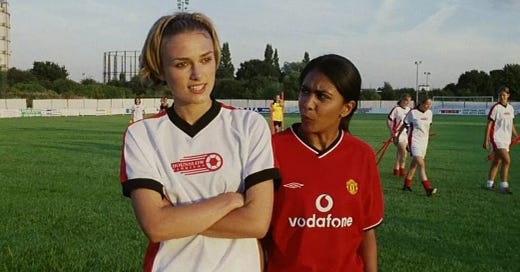Welcome to the Brown History Newsletter. If you’re enjoying this labour of love, please do consider becoming a paid subscriber. Your contribution would help pay the writers and illustrators and support this weekly publication. If you like to submit a writing piece, please send me a pitch by email at brownhistory1947@gmail.com. Check out our SHOP and our Podcast. You can also follow us on Instagram and Twitter.
The Problem with British Asian Cinema
In the fall of 2019, I was pitching a screenplay about the journey of a South Asian family during different periods of time through their diaspora. In one meeting, a producer made several notes about the screenplay, which I was initially happy to receive. The producer had insisted that the drama be turned into a comedy in the same vein as Citizen Khan. The reasoning was that it would be more ‘palatable’ to non-Asian audiences. Comedy has historically served as a device that has introduced external identities on screen. The issue arises as to what this says about the identities and cultures which are categorized as comedic. British Asian representations on screen were introduced through comedies that usually presented stereotypes for the general British population to laugh at. For instance, Curry and Chips (1969), a show that included brownface and lines like “if we sent all the Wogs back home, we’d have an extra hour of daylight!” was cancelled due to its racist nature. The following decades presented shows like Goodness Gracious Me (1998), The Kumars at No.42 (2001) and Citizen Khan (2012). While several British South Asian actors have attempted to use their positions to push back against stereotypes or subtly critique them, much of the comedic representations are rooted in looking at South Asian culture as being inherently funny.
South Asian culture has historically been displayed as something to observe in an orientalist fashion as seen in British Empire Exhibitions. These colonial exhibitions were held in the core of European Empires to raise money for imperial pursuits by showcasing cultural artefacts, people and food from the colonies. Televised and cinematic representations have also fallen into a similar tradition of using comedy as a device to present caricatures of South Asian identities. The stereotype of British Asians as timid, hard-working, ideal immigrants is further illustrated with characters who are hyper-accented, “backwards” with mystical orientalist beliefs, and usually display an authoritarian attitude towards their children. This presentation is usually accompanied by a finely tuned sitar playing over their appearance. Visual mediums communicated to the general public hold an enormous amount of weight to them. They can display racist stereotypes without context, as is historically seen in the representation of Black Britons, or done so much more subtly in the case of British South Asians. We should rightfully question what’s funny about certain representations, especially when they can be socially harmful or may distract from more important and accurate narratives. If South Asian culture is presented as an inherently ‘backward’ and funny identity, the likelihood of seeing more serious films, such as that on colonial history etc. is extremely low.





